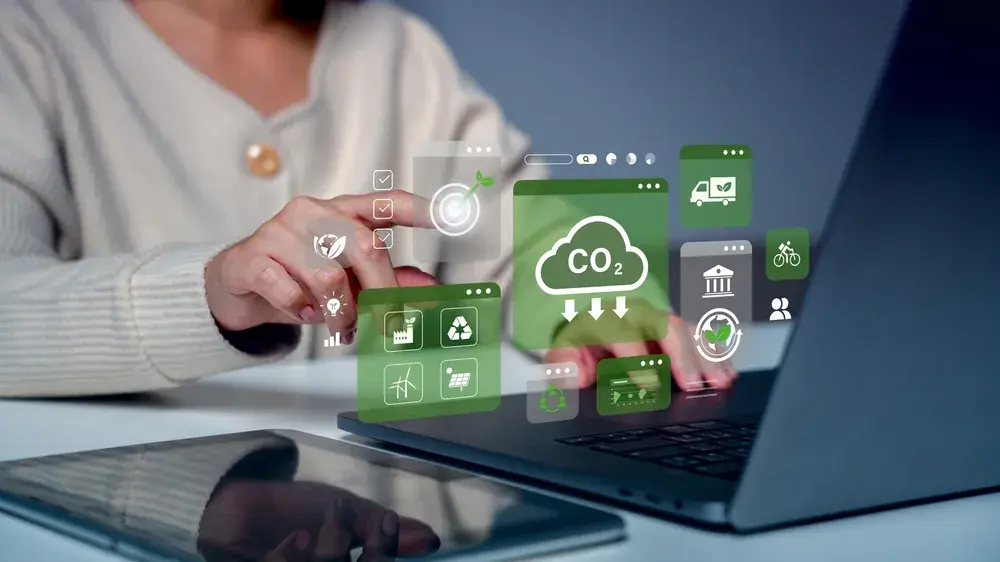Introduction to Commercial Computer Recycling
Definition and scope of computer recycling programs
Commercial computer recycling refers to the systematic process where businesses collecting, refurbishing, and properly disposing of outdated IT equipment. Unlike personal e-waste disposal, commercial recycling involves handling a large volume of desktops, laptops, servers, and mobile devices. These programs ensure that electronics recycling happens in an environmentally responsible way, often using certified partners who comply with waste management regulations.
The scope of these recycling programs goes beyond disposal. They include secure data destruction for businesses, proper material recovery, and sometimes mobile phone recycling or IT asset resale. By implementing structured IT asset disposition services, organizations can minimize risks while maximizing environmental benefits.
Why businesses engage in commercial e-waste recycling
Businesses are increasingly investing in commercial e-waste recycling because it supports sustainability goals, reduces long-term costs, and ensures compliance with strict data protection laws. With growing concerns about environmental impact, companies also recognize the importance of adopting green computing and green technology practices.
Furthermore, certified recyclers, such as certified e-waste recycling London companies, provide added credibility, ensuring that electronics are not illegally exported or dumped. For corporations, this is not just about compliance it’s about carbon footprint reduction and embracing the circular economy.
Environmental Benefits of Recycling Computers
Reduction in electronic waste (e-waste) accumulation
Globally, more than 50 million metric tons of e-waste are generated annually. By adopting computer recycling and electronic waste recycling, businesses reduce landfill accumulation. Commercial recycling helps in recovering useful materials and prevents harmful substances such as mercury and lead from contaminating soil and water systems.
Prevention of hazardous material pollution
Electronics contain toxic components like cadmium, lead, and brominated flame retardants. When not managed through proper electronics recycling, these materials release toxins into the environment. Waste management initiatives focused on recycling significantly reduce this pollution, protecting ecosystems and public health.
Resource conservation: metals, plastics, and rare earth elements
Computer recycling allows the extraction of valuable resources such as copper, gold, aluminum, and rare earth metals. Recovering these materials reduces dependency on raw mining and aligns with sustainability practices. This is also a core principle of the circular economy, where resources are reused and reintegrated into the production cycle, lowering the environmental impact of manufacturing.
Carbon Footprint Mitigation through Recycling
Lifecycle emissions saved by reusing hardware components
Producing new IT equipment consumes significant energy and natural resources. Reusing components through electronics recycling drastically reduces lifecycle emissions. For example, refurbishing a single computer saves several kilograms of carbon emissions compared to manufacturing a new one.
Energy savings in manufacturing versus refurbishing
Manufacturing new electronics requires large amounts of electricity and fossil fuel energy. In contrast, refurbishing or donating equipment uses far less energy. This results in lower carbon footprint levels and makes green computing strategies more cost-effective for corporations.
Case studies: carbon reductions from corporate recycling programs
A report by the Global E-Waste Monitor highlighted that corporate e-waste recycling programs collectively prevent millions of tons of CO₂ emissions annually. Companies adopting IT asset disposition services and certified e-waste recycling practices have recorded up to a 40% reduction in their annual IT-related emissions.
Best Practices in Commercial Computer Recycling
Choosing certified e-waste recyclers (e.g., R2, e-Stewards)
Working with certified e-waste recycling providers ensures compliance with global standards. Certifications like R2 and e-Stewards guarantee environmentally responsible recycling and prevent the illegal export of waste to developing countries.
Secure data destruction protocols
Data security is a critical factor in corporate recycling. Reliable recyclers offer secure data destruction for businesses, which not only protects sensitive information but also ensures compliance with GDPR and other regulations.
Refurbishment, donation vs. recycling: deciding the route
Before recycling, companies should consider refurbishing and donating hardware. Computer recycling should be the final step, taken only when devices can no longer be reused. This approach aligns with sustainability and the circular economy.
Challenges and Environmental Risks
Downcycling and material quality degradation
One drawback of electronics recycling is that some materials lose quality during recovery, making them less useful for high-tech manufacturing. This is known as downcycling.
Illegal exports and improper disposal in developing regions
Despite global efforts, large amounts of e-waste are still exported illegally to countries without proper waste management infrastructure. This practice creates health hazards and increases global environmental impact.
Energy use and emissions from recycling logistics
While recycling reduces carbon emissions overall, the transportation and processing of e-waste can still produce emissions. Companies need to account for this in their carbon footprint reporting.
Innovations Driving Greater Carbon Reduction
Circular economy initiatives in IT asset management
Forward-thinking companies are embedding circular economy principles in their IT strategy. By extending hardware life cycles and reintegrating recovered materials, businesses reduce costs and carbon emissions.
Closed-loop material recovery systems
Technological innovations are improving recovery rates in electronics recycling, allowing near-complete reuse of metals and plastics. These systems reduce dependency on raw material extraction and cut down environmental impact.
Corporate carbon accounting that includes IT recycling
Businesses are increasingly including computer recycling in their carbon footprint accounting. By measuring recycling impact, they gain a clearer picture of how IT operations affect overall sustainability performance.
Regulations, Standards, and Certifications
Global policies impacting computer recycling (e.g., WEEE, EPR)
The EU’s Waste Electrical and Electronic Equipment (WEEE) Directive and Extended Producer Responsibility (EPR) laws require businesses to manage IT equipment responsibly. These policies push companies toward certified e-waste recycling.
Importance of chain-of-custody documentation
Proper documentation ensures accountability. Businesses using IT asset disposition services benefit from a transparent chain of custody that demonstrates compliance and reduces liability risks.
Measuring Impact: Metrics and Reporting
Carbon footprint calculators in e-waste programs
Some recyclers now provide carbon footprint calculators, allowing companies to measure CO₂ savings from electronics recycling and IT reuse.
Reporting frameworks: ESG reports, GRI standards
Organizations include computer recycling metrics in sustainability and ESG reports, demonstrating compliance with GRI standards and building trust with stakeholders.
Conclusion and Call to Action
Summarizing environmental and carbon benefits
Commercial e-waste recycling delivers multiple benefits, reducing e-waste, lowering carbon footprints, supporting sustainability, and aligning with the circular economy.
How businesses can step up and start measuring impact
Every business can start by choosing certified e-waste recycling providers, adopting green computing practices, and implementing IT asset disposition services. Measuring and reporting these initiatives not only improves compliance but also strengthens a company’s environmental reputation.
FAQs
What is the carbon footprint of recycling one computer?
Recycling one computer saves approximately 50–70% of the CO₂ emissions compared to manufacturing a new one.
How do certifications like R2 and e-Stewards differ?
Both certifications focus on responsible recycling, but R2 emphasizes data security, while e-Stewards places stricter controls on international e-waste movement.
Can refurbished computers be less energy-efficient long-term?
Not necessarily. Refurbished devices can perform efficiently, especially if upgraded with modern components like SSDs.
Are there tax incentives for corporate computer recycling?
Yes, in many regions, donating refurbished IT equipment provides tax deductions while supporting social programs.
How can small businesses start a recycling program cost-effectively?
Partnering with local certified e-waste recycling London providers or community recycling centers helps small businesses recycle responsibly at lower costs.
What happens to rare metals during the recycling process?
Rare earth elements like gold, palladium, and cobalt are extracted and reused in manufacturing new devices, reducing the need for mining.


